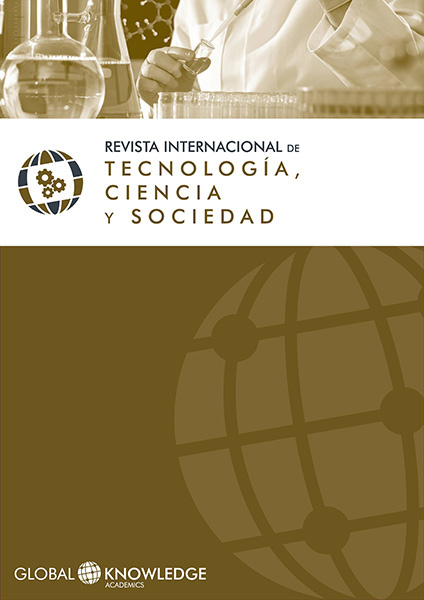Patents for Synthetic Biology: ¿Obsoletes?
DOI:
https://doi.org/10.37467/gka-revtechno.v7.2043Keywords:
Technological Innovation, Synthetic Biology, Patents, Open AccessAbstract
Synthetic biology creates living organisms which did not exist in nature. Although it has not achieved an unanimous definition about what it is, its products are a reality and need regulation. There are two major positions regarding its transfer and protection: those who consider that their advances must be patented and those who opt for open access as a means of "protection" and distribution for these advances. The patent system, historically created to protect inanimate inventions, has come to be considered insufficient for synthetic biology. Open access seeks to exchange different inventions to create interchangeable genetic pieces easily and accessible. In such a new science in which a unanimous concensus in its definition is not yet achieved. How it is expected that its protection or transfer can be determined. The solution may not lie in finding the best form of protection within the tools currently granted by intellectual property.
References
Bhutkar, A. (2005). Synthetic biology: navigating the challenges ahead. The Journal of Biolaw and Business 8(2), 19-29.
BIO. (2013). Current uses of synthetic biology for renewable chemicals, pharmaceuticals, and biofuels. Recuperado de https://www.bio.org/articles/current-uses-synthetic-biology
Bützow, A. (2017). The patent economics of synthetic biology (Tesis de maestría). University of Helsinki, Faculty of Law. Helsinki.
Conde, C. (2012). Consecuencias de la biología sintética en los derechos de propiedad intelectual y acceso a los recursos genéticos y distribución de los beneficios. Revista de la Propiedad Inmaterial. (16), 281-295.
Foucault, M. (2002). La Arqueología del saber. Buenos Aires, Argentina: Siglo veintiuno editores.
Diamond v. Chakrabarty, 447 U.S. 303 (1980).
Gaisser, S. y Reiss, T. (2009). Shaping the science–industry–policy interface in synthetic biology. Systems and Synthetic Biology 3(1-4), 109–114. http://doi.org/10.1007/s11693-009-9027-6 DOI: https://doi.org/10.1007/s11693-009-9027-6
García-Llerena, V. (2016) La biología sintética en el panorama de las patentes biotecnológicas. Revista de Filosofía Moral y Política. (55), 615-636. DOI: https://doi.org/10.3989/isegoria.2016.055.11
Gardner, T. S. y Hawkins, K. (2013). Synthetic Biology: evolution or revolution? A co-founder’s perspective. Current Opinion in Chemical Biology. 17(3), 871–877. DOI: https://doi.org/10.1016/j.cbpa.2013.09.013
Gifford, D. (2004). How do the social benefits and costs of the patent system stack up in pharmaceuticals?. Journal of Intellectual Property Law. 12, 75- 124.
Hernández, J. (2011). Biología Sintética. Enciclopedia de Bioética. Recuperado de http://enciclopediadebioetica.com/index.php/todas-las-voces/204-biologia-sintetica
Hope, J. (2008) Biobazar: the open source revolution and biotechnology. Massachusetts, Estados Unidos de América;Harvard University Press.
iGEM Parts Registry. Registry of Standard Biological Parts. Recuperado de http://parts.igem.org/Main_Page
Kahl, L., y Endy D. (2013). A survey of enabling technologies in synthetic biology. Journal of Biological Engineering, 389-393. Recuperado de https://doi.org/10.1186/1754-1611-7-13 DOI: https://doi.org/10.1186/1754-1611-7-13
Lemley, M. A. (2015) IP in a world without scarcity. New York University Law Review. 90, 460-515. DOI: https://doi.org/10.31235/osf.io/3vy5a
Ley Federal de Variedades Vegetales. Diario Oficial de la Federación, México, D.F., 25 de octubre de 1996. Recuperado de http://www.diputados.gob.mx/LeyesBiblio/pdf/120.pdf
Mandel, G. N. y Marchant, G. E. (2014). The living regulatory challenges of synthetic biology. Iowa Law Review. 100, 155-200. DOI: https://doi.org/10.2139/ssrn.2410179
Mossoff, A. (2001). Rethinking the development of patents: an intellectual history, 1550-1800. Hasting Law Journal. 52(6), 1255-1322.
Oldham, P., Hall, S., y Burton, G. (2012) Synthetic biology: mapping the scientific landscape, Plos Medicine, 7(4), 1-16. DOI: https://doi.org/10.1371/journal.pone.0034368
OMPI. Acuerdo de la Ronda de Uruguay: ADPIC- Aspectos de los Derechos de Propiedad Intelectual Relacionados con el Comercio. Recuperado de http://www.wipo.int/treaties/es/text.jsp?file_id=305906
OMPI. Convenio sobre la Patente Europea. Recuperado de http://www.wipo.int/wipolex/es/other_treaties/text.jsp?file_id=312166
OMPI. Patente. Recuperado de http://www.wipo.int/patents/es/faq_patents.html
OMPI. PCT Glosario. Recuperado de http://www.wipo.int/pct/es/texts/glossary.html#E
Órgano Subsidiario de Asesoramiento Científico, Técnico y Tecnológico. (2014). Cuestiones nuevas e incipientes: biología sintética. Recuperado de https://www.informea.org/es/node/76304
Rai, A. y Boyle, J. (2007). Synthetic biology: caught between property rights, the public domain, and the commons. PLoS Biology. 5(3), 389-393. DOI: https://doi.org/10.1371/journal.pbio.0050058
Real Academia Española. (2017). Tecnología. En Diccionario de la lengua española. Recuperado de http://dle.rae.es/?id=ZJ2KRZZ
Rutz, B. (2009). Synthetic biology and patents. A European perspective. Science & Society, EMBO Reports. 10, 14-17. DOI: https://doi.org/10.1038/embor.2009.131
Sanner, J.W. (2016) The struggle for CRISPR: A billion dollar question in intellectual property. University of Illinois Journal of Law, Technology & Policy. (431), 431-453.
Schmidt, C. (2010). Synthetic biology: environmental health implications of a new field. Environmental Health Perspectives. 11 8(3), 118-123. DOI: https://doi.org/10.1289/ehp.118-a118
Schumpeter, J. (1935). The analysis of economic change. The Review of Economic Statistics, 17(4), 2-10. DOI: https://doi.org/10.2307/1927845
Singh, T. (2015). Open Sources business models and synthetic biology. Chicago-Kent Journal of Intellectual Property, 14(2), 455-484.
SynBioBeta. (2017). Annual synthetic biology industry investment update. Recuperado de https://synbiobeta.com/annual-synthetic-biology-industry-investment-update-1-billion-usd-invested-past-12-months/
Van Doren, D., Keonigstein, S. y Reiss, T. (2013). The development of synthetic biology: a patent analysis. Systems and Synthetic Biology. 7(4), 209-220. DOI: https://doi.org/10.1007/s11693-013-9121-7
Veiga, L. (2001). Innovación y competividad. Revista de Antiguos Alumnos del IEEM, 4(3), p.72-87. Recuperado de http://www.academia.edu/28338898/Revista_de_Antiguos_Alumnos_del_IEEM_Innovaci%C3%B3n_y_competitividad
Torrance, A. W. (2011). DNA Copyright. Valparaiso University Law Review. 46, 1-41.
Torrance, A. W. y Kahl, L. J. (2014). Bringing Standards to life: synthetic biology standards and intellectual property. Santa Clara High Technology Law Journal. 30(2), 199-230.
Twist BioScience. (2018). Top 10 moments in synthetic biology 2017. Twist BioScience. Recuperado de https://twistbioscience.com/company/blog/twistbiosciencesynbio2017
Worall,T. (2001). The 2001 PTO utility examination guidelines and DNA patents. Berkeley Technology Law Journal. 16(1), 123-143.
Downloads
Published
How to Cite
Issue
Section
License
Those authors who publish in this journal accept the following terms:
- Authors will keep the moral right of the work and they will transfer the commercial rights.
- After 1 year from publication, the work shall thereafter be open access online on our website, but will retain copyright.
- In the event that the authors wish to assign an Creative Commons (CC) license, they may request it by writing to publishing@eagora.org








